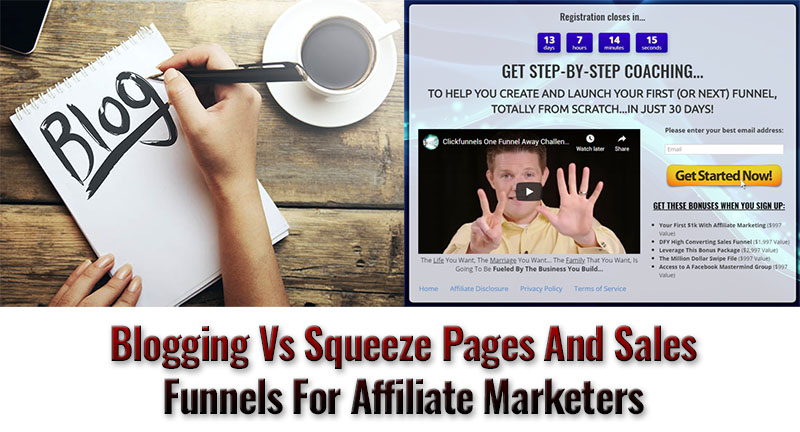
This site is dedicated to helping people learn how to do list building and email marketing.
And you’ll see from this site that most of what I talk about is building squeeze pages (optin pages) and sales funnels.
Squeeze Pages And Sales Funnels
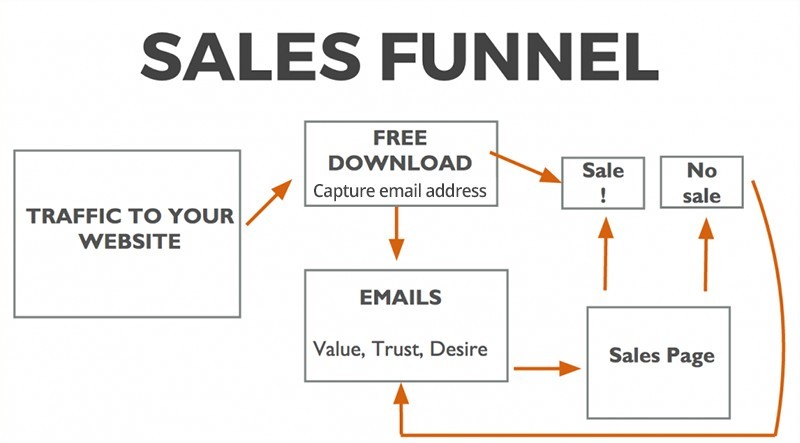
Squeeze pages can exist as their own thing just to entice visitors to join a mailing list or they can act as the first page in a sales funnel where, after the visitor signs up, they are exposed to multiple hidden pages of training, content or offers.
Typically, in the email sequence that is sent out to new subscribers, there’d be links to those hidden pages.
The idea is to keep the subscriber interested and remind them about the product or service you’re ultimately selling.
Why?
Because people need to be exposed to a product up to 7 times before they’ll actually click an order button.
So if you simply rely on the squeeze page or its associated Thank You For Joining page (on the other side of the squeeze page), then you end up losing out on sales.
With a sales funnel, you can more easily move a subscriber from being a prospect to being a paying customer.
Email marketing plays the biggest role in a sales funnel.
So every squeeze page should put subscribers onto an email sequence where they’ll receive an email every day, at least for a few days.
Many sales funnels end there.
Once the subscriber has reached the end of the email sequence, they’ve either bought what’s on offer or they haven’t.
So What Do You Do Now?
Unless you send out frequent broadcast emails, you’ve essentially lost that subscriber as they’ll forget who you are.
Or, you can add additional emails to your email sequence to promote other products.
And you can extend your email sequence out as much as you want.
At least that way you have a chance of selling something at some point in the future.
Traffic Is The Lifeblood of Every Online Property
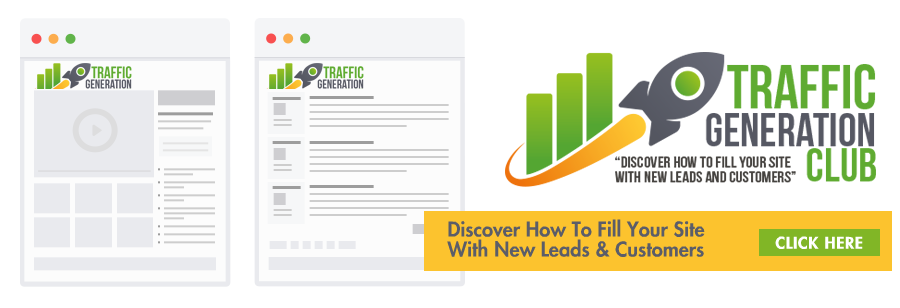
The one thing all web pages, videos, social media, etc. need to reach an audience is traffic.
To misquote a line from Soylent Green: “Traffic is people!”
So “driving traffic” really means getting real people to see your content.
But, more than that, it means getting the right people to see your content – those who are interested in what you have to say or sell.
The easiest way to do that is to buy that traffic (more on this below).
How Blogs Work
Squeeze pages are designed to convert interested visitors into subscribers.
They’re not designed to catch passing visitors like fishing nets catch a bunch of fish or, indeed, like blog posts which act in a similar way.
With blogs, you hope that your blog posts will rank highly for certain keywords and when someone types that keyword into a search engine you hope that your blog post title and description will hook them enough to bring them to your page.
And you’re hoping that’ll happen for hundreds or thousands of searches each month.
Hence, the fishing net analogy.
Because a squeeze page is designed to appeal to a particular type of person (someone looking to build an online business, for example) then you need to send precisely that kind of person to the page.
Otherwise you’re wasting time and money promoting the page.
That’s why most marketers who concentrate on squeeze pages and sales funnels as opposed to blogs, will buy traffic (I’ll talk about this below).
The ad platforms allow them to select very precise types of visitor to go to their site so that they’re getting the biggest bang for their buck.
It’s also the quickest way to see results (good or bad).
If they own blogs, like I do, then they can also link out to their squeeze pages and sales funnels from inside blog posts and do all the other free ways of getting traffic (videos, social media, etc).
But they’re not relying on that free, organic traffic to support their business.
Since blogs largely get what I call drive-by traffic – people who visit once and never or rarely come back – they rely on one of these passing visitors to buy something promoted on the blog page.
They essentially have one chance to make a sale and then the visitor is gone for good.
With a sales funnel, you’ve captured that visitor’s information and can market to them again and again, so you get multiple shots at getting a sale.
Buying Traffic
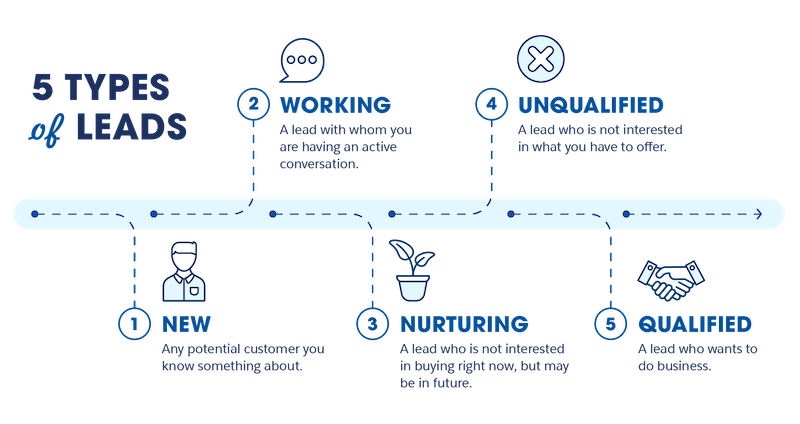
Buying traffic means paying to advertise on Google Adsense or Facebook or on other ad platforms which allow you to very precisely and rapidly target the kind of people you’re looking for.
Or it involves buying leads directly from a company like Udimi that’s in this line of business.
But buying ads or leads costs money.
And there’s no guarantee that your ad campaign will hit home or that your leads will be responsive to your offers.
You have to accept that your ad may tank, and your leads may be dud, and you could lose your ad spend.
Free Traffic
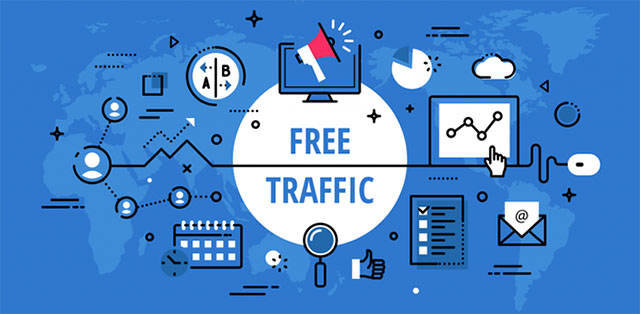
One way of getting people to see your content is through web searches.
People look for information online and if it’s in a topic your website is about, then you need your webpages to appear on page #1 of the search engines for the keywords and phrases people are typing into those search engines.
Other ways of getting free traffic include posting on the popular social media sites like Facebook, Twitter and Pinterest.
Posting videos to YouTube and TikTok is another way to get traffic.
This is all known as organic traffic.
It’s completely free.
Or is it?
When you buy ads, you’re paying up-front for the type of traffic you want.
With organic traffic you pay in a different way – with your time.
To be successful in getting organic traffic, one skill you have to be good at what’s called Search Engine Optimization, or SEO, especially where blogging os concerned.
These are tweaks and tricks employed by webmasters to get their sites noticed by the search engines so that they appear high up in the list of search results.
SEO involves all of the following, but not every site will use all methods:
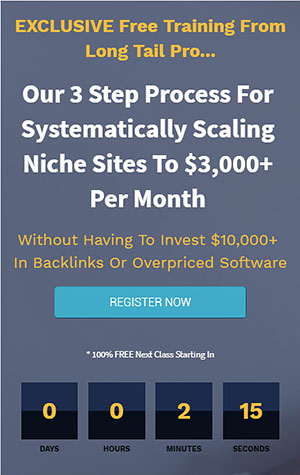 1. Keyword research – this means looking for popular search terms on the search engines using a keyword research tool – but terms that are at least relatively easy to rank for.
1. Keyword research – this means looking for popular search terms on the search engines using a keyword research tool – but terms that are at least relatively easy to rank for.
But search terms wax and wane in popularity and new terms alway come along.
So you need to keep creating content (blog posts) that targets newer terms or you at least need to increase the number of blog posts you have to target more keywords.
2. On-Page SEO – this is where you strategically place your main keywords and related keywords in your content to give the search engines a better idea of what your page is about.
It also involves linking to other posts on your blog and linking out to authoritative external sites so that your blog post isn’t a dead end on the internet.
3. Off-Page SEO – these are actions taken outside of your own website that will have an impact on your rankings within search engine results pages.
A good example is creating backlinks that appear on other sites.
You can do this by leaving comments on other people’s blogs, writing guest posts, submitting articles to the article directories, linking back to your pages from social media posts or YouTube video descriptions and so on.
There’s more about Off-Page SEO on Moz’s website.
It’s all about improving search engine and user perception of your site’s popularity, relevance, trustworthiness, and authority.
Where social media is concerned, you need to post regularly to keep people engaged, so that means you need to put time into creating your posts and publishing them.
You may also need to spend time creating an image for the post (necessary for Pinterest) to grab the reader’s attention.
Where YouTube and TikTok are concerned, you need to create videos.
To make decent videos, aside from having a quality smartphone or webcam, you need a good quality microphone, a script so you don’t look like you’re a complete amateur and time to edit the final video.
You also have to feel comfortable on camera (though this comes with experience).
If you really don’t want to appear on camera, or speak in your own videos, you can use an online video creation tool like Vidnami or Instant Video Wizard to create professional-quality videos using stock photos and video clips.
I create most of my videos this way myself as I’ve never been comfortable in front of a lens from the time I was a kid.
Time Vs Money
SEO
By now, you should be seeing that SEO is actually a lot of work that takes a fair a bit of time to get done.
Not only that, it’s an ongoing exercise you need to engage in.
As soon as you stop, your site can start slipping down in the search engine results.
It all depends on how much competition your website has from other webmasters and how aggressive they are in doing SEO for their own sites.
Google likes to rank sites that remain active, so in addition to doing all the SEO work, you need to be adding new posts to your blog regularly and answering comments.
Making Videos For YouTube
Making decent quality videos also takes time.
Over time though, you’ll build up a collection of content if you post videos to YouTube.
But at least these videos remain online for as long as you want and can be found by people on YouTube (which is a video search engine, after all).
Working with TikTok is similar except here you create short videos to grab attention.
With YouTube, you can put one or more links in each video description but with TikTok you can only have one link – in your bio.
There are ways you can promote multiple links using your bio link as I outline in these TikTok promotion solutions.
Social Media
Social media posts come and go in a flash and they’re not designed to remain evergreen.
Yes, they do remain on the platforms where they were posted, but let’s face it, searching for posts on a particular topic isn’t what people use social media for.
They want the 15-30 second hit of new content a fresh post brings, before they move on to the next one.
Blogging Vs Squeeze Pages And Sales Funnels
What I’ve described above is the affiliate marketing through blogging business model vs the affiliate marketing with sales funnels model.
Blogging can be extremely lucrative when done right but don’t kid yourself if you’re thinking it’s an easy way to make money online.
It requires time, dedication, focus, determination and commitment.
But if you’re prepared for that and like a challenge, then you can shortcut a lot of the pitfalls and learn the right and effective way to do things by signing up for a course.
There’s no point in trying to go it alone, thinking you can learn everything you need for free from YouTube.
Yes, you can learn stuff, but there’s no overarching framework showing you how to build your online business.
And, without that, you’ll just bumble along, not knowing what’s really important to your success and what isn’t.
I can recommend the Wealthy Affiliate course if you want that kind of structure that will help with your business progression and long-term goal setting where affiliate marketing and blogging are concerned.
I’ve been a member of it myself for several years now and the principles it teaches, I’ve used for the very site your on right now.
I have a review of it here if you want to learn more.
So How Are Squeeze Pages And Sales Funnels Different?
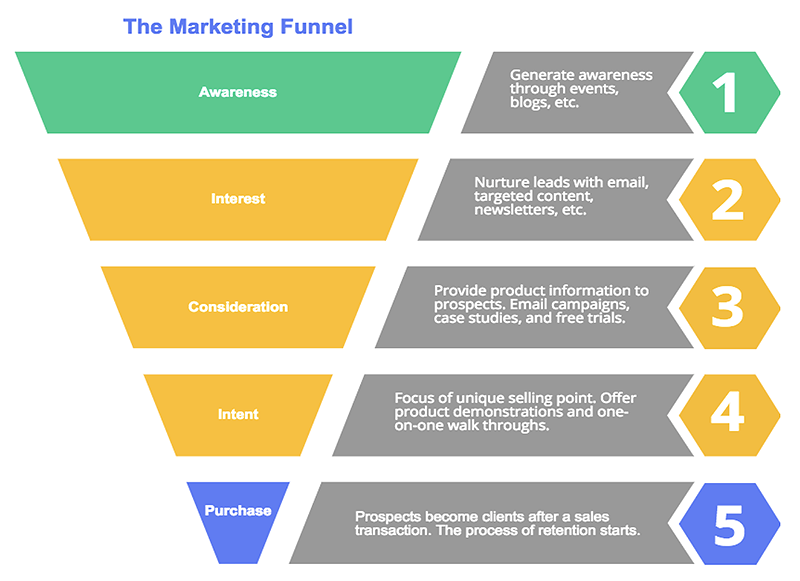
These types of pages are not built to rank in the search engines.
They can, if you’re lucky, but they generally have minimal content on them so the search engines see them as “thin”.
A squeeze page will have one or two input boxes to collect an email address and maybe a name from a visitor; it may have a video describing what’s on offer and a small blurb about the benefits of handing over their information.
It’s essentially the front-door page to a sales funnel.
There’s usually an enticement on offer, called a Lead Magnet.
This is something that’s being given away for free in exchange for the visitor’s email address.
A lead magnet has typically been a free report or ebook but these days, you really need to give away something more substantial like a video training course, some software or some valuable insider knowledge.
In other words, what you offer has to have real value rather than being something forgettable and cheap.
And, the more expensive the cost of the offer you’re eventually sending your subscribers to, the more perceived value your lead magnet needs to have.
If you’re enticing subscribers with some low-grade PDF report but your ultimate goal is to send them to a $1,497 offer, unless that report contains pure gold, those subscribers are never going to part with their money.
Something unique is often perceived as being more valuable than a fixed value item.
For example, a free 3- or 5-day video course on affiliate marketing from an established expert will carry more weight than a $97 ebook that you’re giving away for free.
So try to make your lead magnet as unique and exclusive as you can.
Final Thoughts

Blogging requires you to publish content regularly to keep your site alive.
- You need to do this to maintain or improve your site’s ranking in the search engines.
- You also need to keep publishing to keep your readers interested, informed and/or entertained.
- You also need to keep doing SEO help your site maintain its rankings and to reach more people.
Sales funnels you build once, and once they’re online you don’t have to do anything with them.
Realistically though, you should be split testing your squeeze pages to get better and better conversion rates.
You don’t have to worry much about SEO, though it helps if you want to promote or list your site on other sites and platforms.
And you don’t need to adhere to a regular publishing schedule.
Again, in practice, that’s not entirely true.
On the other side of your squeeze page should be your email list.
While you can have an email followup sequence that’s days, weeks or months long, what many marketers prefer to do is have a short followup sequence, after which the subscribers get added to their broadcast emails list.
And, pretty much every day, they send out a new email to those subscribers.
This allows them to leverage current events and to promote new products or time-limited products in a timely fashion.
Emails in a long followup sequence can go stale…
- maybe a product is taken off the market
- maybe a better alternative comes along
- maybe the product vendor changes their affiliate network
All of these require you to know what you’re promoting in a long followup sequence and to keep on top of any changes to products and promotions.
You then may need to edit or replace emails as needed.
Relying on broadcast emails instead is a bit more daily work but everything you talk about and promote is fresh.
All this should show you that there’s no set-it-and-forget-it solution to building an online business.
You have to be prepared to put time into at least maintaining it, if not growing it.
Online tools can make these tasks easier and some can even be automated or outsourced.
Either pick Blogging as an affiliate marketing model or pick Squeeze Pages And Sales Funnels.
Put your focus into that until you become successful.
Then look at expanding into the other business model.
You can still build an email list while blogging without having to build dedicated squeeze pages and sales funnels.
Your autoresponder service will allow you to create simple squeeze pages that you can either embed in your blog posts, sidebar or display as popup windows on your site.
But, if you do start building a list, make sure to send out emails regularly to keep your subscribers interested and engaged.
You don’t have to send promotional emails.
You can send out emails that lets your subscribers know what you’re up to, what you’re interested in, maybe give them some free training, and so on.
It builds a rapport with your subscribers so that they come to know you.
And once that happens, they start to trust you.
And that’s the basis of a solid online business, whatever strategy you use for getting people onto your list.

All the best,
Gary Nugent
Check out my Instagram posts and reels here:
Follow me (@aiaffiliatesecrets) on Instagram
P.S.: Don't forget, if you want to create an internet income of your own, here's one of my recommended ways to do that:
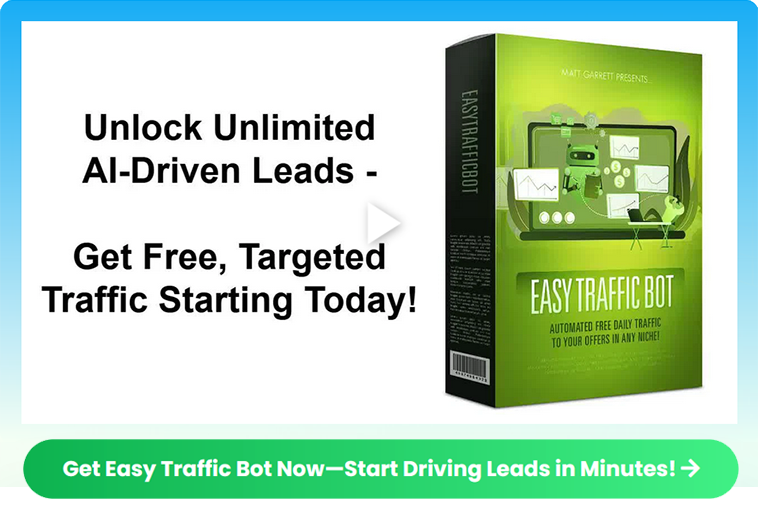




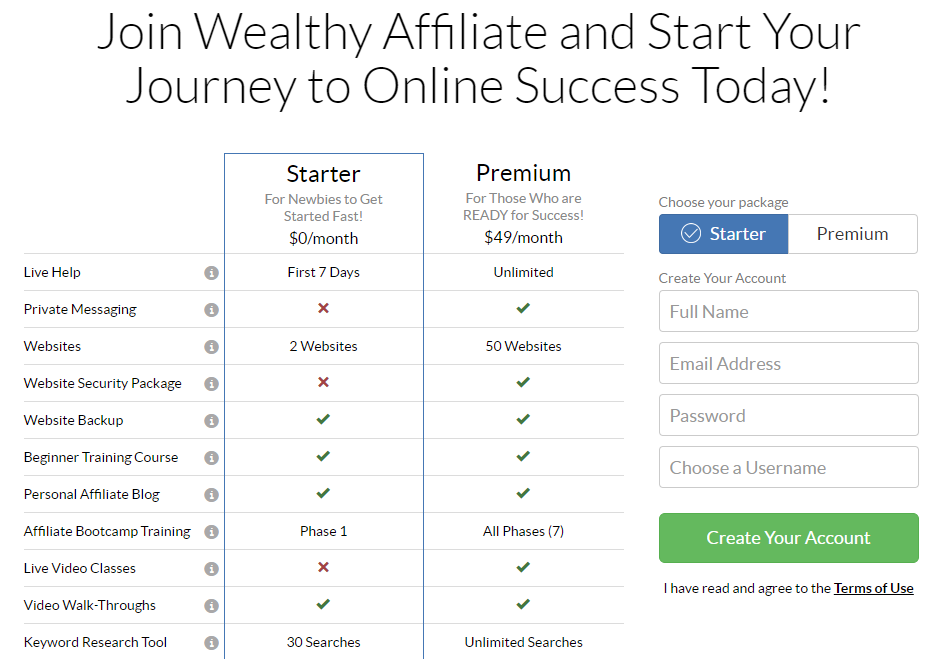
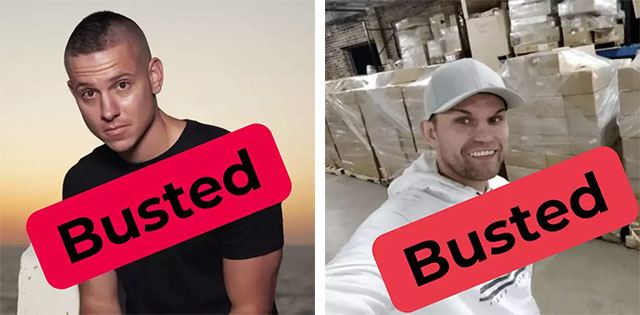
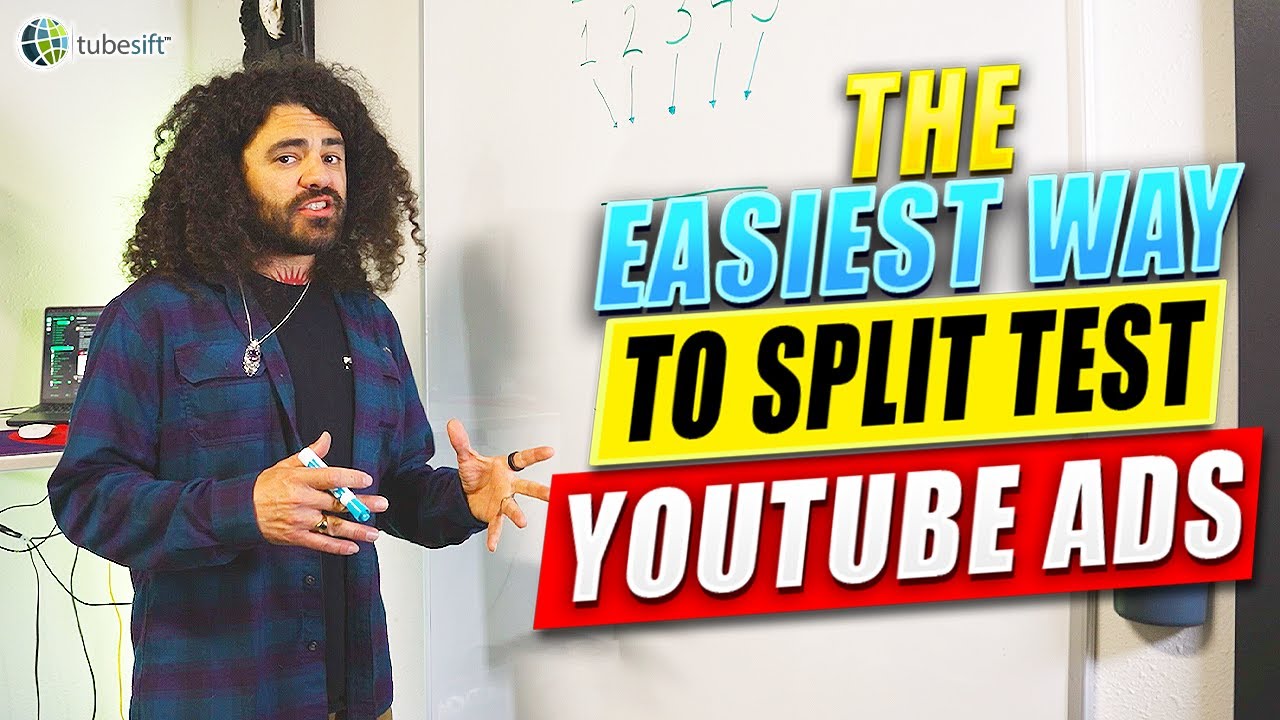

Great article.
What actually interested me the most was the difference between paid traffic and free traffic. I have had a long discussion with a friend of mine about this topic.
We both agreed that the best way is to be patient and put the effort into building organic traffic.
Then once we figure out what works, we “invest” money in that particular area.
That is my general opinion about the paid traffic.
Yeah, Michal, buying traffic without understanding where to buy it is a quick route to a big hole in your wallet.
You need to know the type pf people who are interested in your offers, whatever niche you’re in.
Not only that, you need to know that they have money to spend and are willing to spend it.
That’s why the top niches (and their sub-niches) are Wealth, Health and Relationships. And, to some extent, Self-Help.
Other niches can be very profitable too, but can often require you having some in-depth knowledge to can leverage to build trust with people.
Generally, people are more willing to spend money on something pain-related, whether that’s physical, mental or financial.
As affiliate marketers, we offer solutions to people with problems of various kinds and get a finder’s fee for connecting the person with a problem with the person who can solve it for them.
Free traffic is definitely the way to start while you learn the ropes.
It is, however, a really slow way of building a business. But it is a safe one, financially speaking.
And it does only make sense to invest hard-earned money in advertising to people who are most likely to respond to your promotions, as you say.
Hi there! This is a beautiful write up about blogging vs squeeze pages and sales funnes. I must say I’m glad I came across it. The information contained in this article are valuable and noteworthy. To do my part on taking this to a wider audience, I am going to share with friends who are also into the business of affiliate marketing to also make use of the great information displayed here. Thank you for sharing this.
Thanks for sharing my post, Joshua. Great to hear you found it informative. Just how many friends do you have who are into affiliate marketing?! 🙂 None of my own friends have gone down that path. They all prefer the so-called security and a regular paycheck that being an employee gives them.
This was a very helpful and informative article to help demystify blogging, squeeze pages, and sales funnels. I am definitely better at one of those three than the others, and because of that, I can spend too much time in the lane where I’m most comfortable. The sales funnels discussion was particularly helpful and has given me some inspiration for a free product download for my readers. Thanks for the post!
Glad you found the post informative, Aly. I’ve been blogging for years but am relatively new to building sales funnels, having done my first course on them about 18 months ago. There are times I’ve had writer’s block and either couldn’t think of what to write about next or I just couldn’t drum up the enthusiasm or energy to write.
With sales funnels, even if I’m feeling really lethargic and uncreative, I can always find a funnel that someone else has built and import it into Clickfunnels and simply tweak that. That’s about as easy as things can be.
While most of my effort still goes into blogging, I love that my sales funnels are building by email list for me. And that’s really the most important asset any online business owner can have.
Hey Gary. Very interesting article. I’m just starting my adventure with digital marketing and posts like this are extremely helpful. I was reading a bit before about Wealthy Affiliate and it seems as a great starting point to grow a business. Thank you very much for your tips and advices, looking forward to test them in practice.
Thanks for letting me know you found the article useful, Cogito. I’ve bought several “blogging for profit” type courses over the years and they all pretty much disappeared now. Their creators/developers didn’t keep them up to date or moved on to other things, leaving their students high and dry.
Wealthy Affiliate has stood the test of time and has moved with the times, updating strategies, removing old ones that no longer work and constantly adding new training.
They’re a web hosting platform as well so if you sign up, you won’t have to pay hosting fees somewhere else.
Don’t forget that I offer my own bonus package to anyone who decides to sign up through this page.